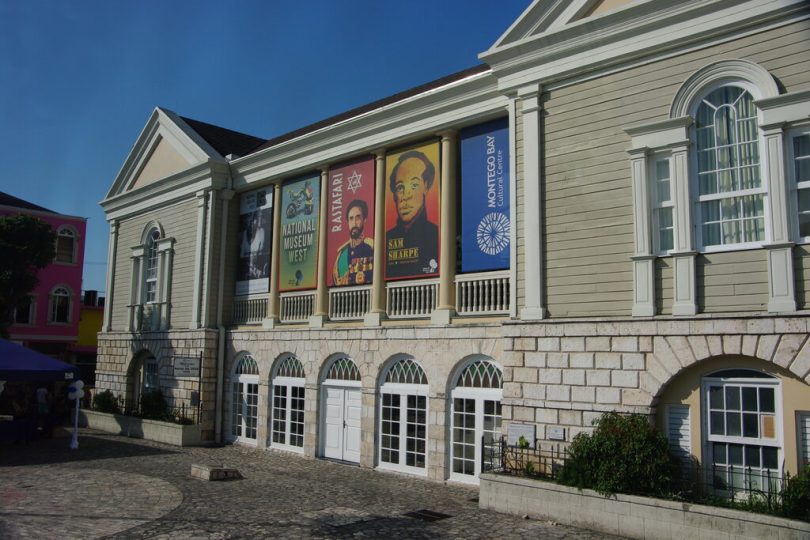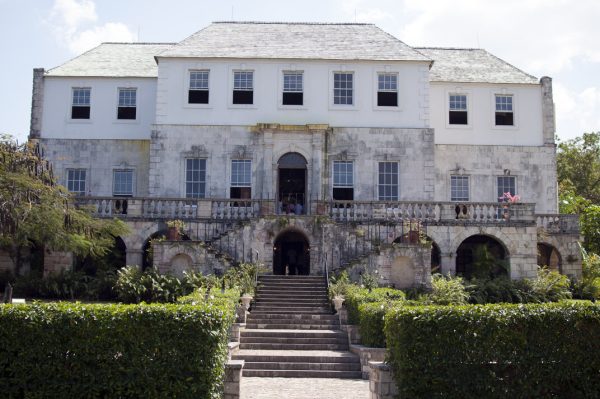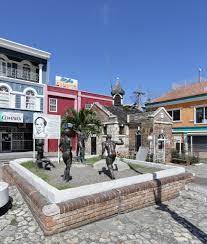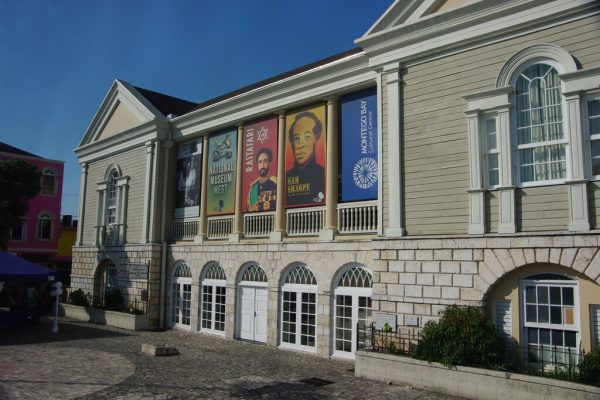
Montego Bay, famous for shopping and entertainment, has a deep history dating back to Jamaica’s earliest people, the Taino, and the shows of wealth and power by colonial rulers. Visitors to Montego Bay have many opportunities to learn about the fascinating early days of this vibrant Jamaican community by exploring some of the oldest structures on the island and discovering its history in its excellent museums. Read on to learn about a few of these historic sites.
Jamaica’s Great Houses
According to the Jamaica National Heritage Trust, there are some 400 great houses that survive on the island out of the estimated 700 that existed at the time slavery was abolished in 1838. Most are in ruins, and some have become homes for village families, which makes the refurbished and restored Rose Hall Great House in Montego Bay one of the most popular tourist attractions. Other popular great houses in Montego Bay include Bellefield Great House and Greenwood Great House.

Rose Hall Great House
Rose Hall Great House, built in the Georgian-Jamaican style, is one of the most famous plantation houses in Jamaica. It is chiefly known as the home of the “White Witch of Rose Hall,” the legendary Annie Palmer who is said to have murdered three husbands there. She is believed to haunt the house, and visitors can take a night tour to experience the darker side of the attraction. According to the legend, Annie Palmer was born in Haiti to English and Irish parents and adopted by a nanny who instructed her in witchcraft and voodoo. She married John Palmer, the owner of Rose Hall, after she moved to Jamaica and later murdered him and two other husbands, as well as several male slaves who worked on the plantation. A song, “The Ballad of Annee Palmer,” was recorded by American country star Johnny Cash, who owned the neighboring Cinnamon Hill Great House until his death.
Bellefield Great House
Bellefield Great House is located on one of Jamaica’s oldest sugar plantations. It was built in the late 1600s and served as the outpost of the St. James militia. Tours of the house and its surrounding tropical acres offer views of artifacts from the Kerr-Jarrett family, who have lived in the house for over 11 generations. Part of the tour also visits the Sugar Mill, which dates from 1794. The house is an example of Plantation Architectural Design and features the large verandah and jalousie windows characteristic of the style. The Sugar Mill was constructed of stone cut in England and shipped to Jamaica.
Greenwood Great House
Greenwood Great House is located on a hill and features expansive views of the Caribbean Sea. It was built in the 1780s by Richard Barrett, an extremely wealthy cousin of the famous English poet, Elizabeth
Barrett Browning. The house was built for Richard after he became Speaker of the Assembly and needed a place to entertain. It is one of four Great Houses owned by the Barrett family in Jamaica and is one of the best preserved, having survived destruction during the revolt staged by enslaved people in 1831. Over 200 “Great Houses” were razed during the revolt. It is believed that Greenwood survived because the enslaved workers there were treated better than the norm at the time. By the mid-18th century, the Barretts owned more than 84,000 acres of land and more than 2,000 enslaved individuals. The house is considered one of the most authentic examples of how the plantation owners lived and was declared a national monument because of its history and the inclusion of priceless antiques, including period furniture, rare musical instruments, and Wedgwood China made expressly for the Barrett family.

Sam Sharpe Square
Sam Sharpe Square, which was originally known as “the Parade,” was named for one of Jamaica’s National Heroes, the Right Excellent Samuel Sharpe. Sharpe lived from 1801 to 1832 and was the leader of the Christmas Rebellion in 1831. The square features numerous buildings in the Georgian style and monuments marking the area’s history. These include the Sam Sharpe Monument, a bronze sculpture by Kay Sullivan that portrays the rebel leader holding his Bible and addressing the people. The square also includes The Cage, which was a jail for holding petty criminals, drunkards, and enslaved people. A monument was erected in 2007, the Freedom Monument, dedicated to those enslaved people who participated in the War of Emancipation in 1831-1832. The square is also the site of the Court House, which was built in 1883 and now serves as a civic center that features a museum, art galleries, and a venue for performances.
The Creek Dome
The Creek Dome is a white, wooden and yellow brick tower with fixed wooden louvres. It was built over the source of a creek located in Montego Bay. Originally, the Dome was just a rounded covering for the water that bubbled up at the head of the creek. As time passed, however, it came to have an important role in the water supply of the city. After a water-pipe system was installed in 1893, the use of the Dome lessened, but it remains an important alternative water source during times of drought.

National Museum West
This excellent museum offers historical displays of objects associated with the development of western Jamaica. These include items from the Cohaba ceremonies conducted by the indigenous Taino people, objects dating from the arrival of Spanish and English colonists, items from the transatlantic slave trade, the beginnings of sugar plantations, and the Maroon rebellions. There are also displays describing Jamaica’s emancipation and how Montego Bay developed in the 20th century. A separate room at the museum provides an introduction to Rastafarianism where visitors can learn about Haile Selassie and the Back-to-Africa Movement.
Burchell Memorial Baptist Church
Established in 1824 with only 12 members and headed by the missionary Reverend Thomas Burchell, the church represents those first Baptist missionaries who came from England in support of work begun by George Liele and Moses Baker. These missionaries, who included James Phillippo and William Knibb, became the most popular representatives of any religious group due to the stand they took against slavery. They attract large numbers of converts from both the enslaved and free Black populations. The original building was destroyed in the Emancipation War of 1831 and 1832, also known as the Christmas Rebellion and the Baptist War. It was the church where the leader of the Emancipation War, Sam Sharpe, served as deacon. After he was hanged for his participation in the War, Sharpe was first buried near Montego Bay Harbor, but later, his remains were reburied with honor in the vault of this church. The church was rebuilt after the War and dedicated in 1837.
St. James Parish Church
The St. James Parish Church is considered the finest church building in Jamaica. It was built between 1775 and 1782, but was extensively damaged by an earthquake in March 1957 and had to be rebuilt. Its interior has been called one of the most beautiful rooms on the island, with stunning stained glass representations of the Crucifixion and marble monuments created by the 18th-century British sculptor, John Bacon. The church also features a memorial to Rosa Palmer. She was the original and virtuous mistress of Rose Hall Great House, who is frequently confused with the alleged White Witch of Rose Hall, Annie Palmer. Outside the church are gravestones of some of the pioneer planters on the island.
Photo – Wikimedia Commons







